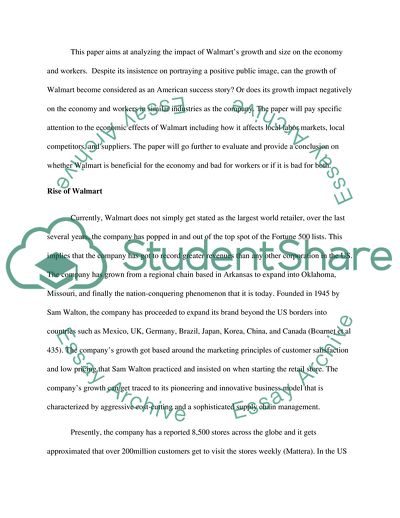Cite this document
(Is Walmart Good for the Economy and Bad for Workers Essay Example | Topics and Well Written Essays - 2750 words, n.d.)
Is Walmart Good for the Economy and Bad for Workers Essay Example | Topics and Well Written Essays - 2750 words. https://studentshare.org/macro-microeconomics/1821762-is-walmart-good-for-the-economy-and-bad-for-workers-or-bad-for-both-why
Is Walmart Good for the Economy and Bad for Workers Essay Example | Topics and Well Written Essays - 2750 words. https://studentshare.org/macro-microeconomics/1821762-is-walmart-good-for-the-economy-and-bad-for-workers-or-bad-for-both-why
(Is Walmart Good for the Economy and Bad for Workers Essay Example | Topics and Well Written Essays - 2750 Words)
Is Walmart Good for the Economy and Bad for Workers Essay Example | Topics and Well Written Essays - 2750 Words. https://studentshare.org/macro-microeconomics/1821762-is-walmart-good-for-the-economy-and-bad-for-workers-or-bad-for-both-why.
Is Walmart Good for the Economy and Bad for Workers Essay Example | Topics and Well Written Essays - 2750 Words. https://studentshare.org/macro-microeconomics/1821762-is-walmart-good-for-the-economy-and-bad-for-workers-or-bad-for-both-why.
“Is Walmart Good for the Economy and Bad for Workers Essay Example | Topics and Well Written Essays - 2750 Words”. https://studentshare.org/macro-microeconomics/1821762-is-walmart-good-for-the-economy-and-bad-for-workers-or-bad-for-both-why.


